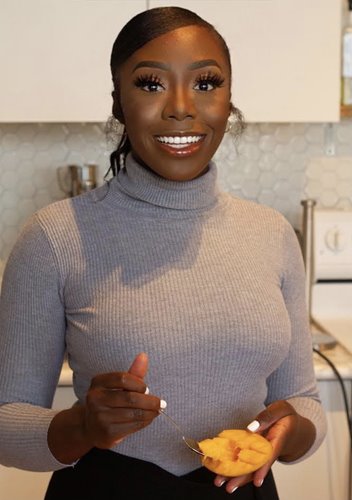
Tracey Frimpong, RD works as a clinical dietitian at a hospital in Ontario.
What are your day-to-day responsibilities as a dietitian?
As a clinical dietitian one of my key responsibilities is to assess a hospital patient’s nutritional status and identify nutritional issues. For example, when I cover the gastroenterology unit there may be a patient admitted with pancreatitis - which is when the pancreas becomes inflamed. If there is weight loss, vomiting, and pain when eating, that's when I step in to provide nutrition interventions that will help reduce their symptoms and prevent malnutrition.
What is your approach when providing nutrition education?
When providing nutrition education, it’s really important to get the backstory. Considering factors like - how was this person eating prior to this moment, how ready are they to make a change, and are they able to make these changes - are important when developing a nutritional care plan.
I also think it's very important to meet people where they are and provide them with materials and tools that match their understanding and health literacy. I always set goals alongside my patients and check-in to make sure they are comfortable with the information I am providing and the plan we set.
The feeling of fulfillment I get when I am able to help someone. People often don’t realize what a big difference a carefully planned nutrition intervention can have in helping them feel better when they are sick or recovering from surgery. I am so grateful to be able to work amongst such a wonderful team at the hospital and to apply my knowledge and skills to serve patients from various backgrounds. I wouldn’t want to work in any other profession.
What are some misconceptions about healthy eating?
A really big misconception about healthy eating is that it looks the same for everyone. Often people make the assumption that traditional cultural foods can’t be healthy because they are “too starchy” or “too oily”. If you look across food guides from all over the globe, they tend to all send a similar message -- balance, variety and colour!
What’s your top nutrition tip?
Healthy eating doesn’t have to fit into one set ideal - it’s about balance. No two people are the same, so I don’t think that two people should eat the same way. It’s about variety, enjoying the food that you eat, and practicing mindfulness. We all come from different cultures and backgrounds and food means something different to each of us - from the way it is prepared to how it’s eaten.
Check out these articles and recipes recommended by Tracey:
Simple Steps to Freeze Food Right
What’s the Difference between Omega-3 and Omega-6 Fats?
Healthy Habits to Cope with Stress
Apple Maple Cheesecake
Interested in connecting with a dietitian for personalized nutrition advice? Use our Find a Dietitian tool.
For more information, check out our article on the Top 5 Reasons to See a Dietitian.
Last Update – January 26, 2023